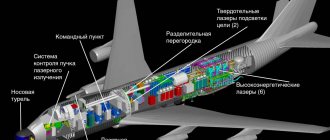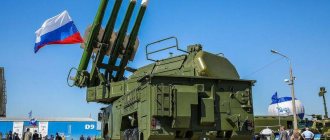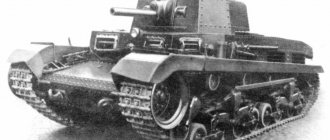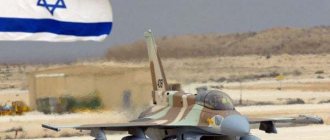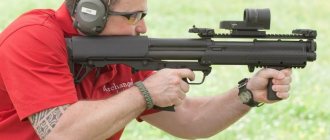The Hungarian Army is subordinate to the Ministry of Defense. However, like the army of any other country. In 2016, the strength of the Hungarian army was 31,080 active duty personnel, while the operational reserve brings the total number of troops to fifty thousand. In 2022, Hungary's military spending was $1.21 billion, about 0.94% of the country's GDP, well below the NATO target of 2%. In 2012, the government passed a resolution committing Hungary to increase defense spending to 1.4% of GDP by 2022.
Service outside the country
In 2016, the Hungarian armed forces had approximately 700 troops stationed abroad as part of international peacekeeping forces, including 100 troops serving with NATO-led peacekeepers in Afghanistan, 210 Hungarian soldiers in Kosovo and 160 troops in Bosnia and Herzegovina . Hungary sent 300 logistics units to Iraq to assist US troops with armed transport convoys, although ordinary citizens were against joining the war. During the operation, one Magyar soldier was killed by an Iraqi roadside bomb.
Short story
In the 18th and 19th centuries, the hussars brought international fame to this country and served as a model of light cavalry in all European states. In 1848-1849, the Hungarian army achieved incredible success against the well-trained and equipped Austrian forces, despite the latter's obvious superiority in numbers. Józef Böhm's Winter Campaign of 1848-1849 and Arthur Gerge's Spring Campaign are still taught to this day in prestigious military schools around the world, even at West Point Academy in the United States and Russian military academies.
In 1872, the Louis Military Academy officially began training cadets. By 1873, the Hungarian army already had more than 2,800 officers and 158,000 employees. During the Great (First World) War, out of the eight million people mobilized by the Austro-Hungarian Empire, more than a million died. In the 1930s and early 1940s, Hungary was preoccupied with recapturing the vast territories and vast numbers of population lost following the signing of the Treaty of Trianon at Versailles in 1920. Conscription was introduced on a national basis in 1939. The size of the Royal Hungarian Army grew to 80,000 men, organized into seven corps. During the Great Patriotic War, the Hungarian army took part in the Battle of Stalingrad on the side of the Germans and was almost completely destroyed. During the era of socialism and the Warsaw Pact (1947–1989), it was completely restored and reorganized, and thanks to the support of the USSR received full-fledged tank and missile forces.
According to the 2016 Global Peace Index, Hungary is one of the most peaceful countries, ranking 19th out of 163.
Saxon city militia
The Saxons are the German-speaking population of Transylvania, who lived there from the mid-12th century to the mid-20th century. They inhabited the Semigrad region and made up the majority in three cities - Hermannstadt - which was the center (modern Sibiu in Romania), Brasov and Curaly.
The Saxons, like the Székelys, had autonomy and were required to pay only one tax to the crown - the blood tax. In other words, to supply 500 fully equipped warriors for internal service and 100 warriors for service outside Transylvania in peacetime.
But during periods of war, thousands of Saxons took up arms. They were later organized into 8 military districts as the threat from the Turks increased. According to some data, the Transylvanians-Székelys and Saxons in the 1430s. fielded 4 thousand soldiers (approximately 2 thousand 400 Székelys and 1 thousand 600 Saxons).
The Hungarian Saxons were equipped primarily as heavy and medium infantry, but unlike the Szeki, there were no horsemen among them. The Saxon militia consisted of spearmen, halberdiers, crossbowmen and, later, arquebusiers.
Mentions that the army included detachments of townspeople probably indicate well-equipped Saxon infantry. The similarity of the Saxons in the manner of fighting the German mercenaries of King Janos is noted.
The favorable economic position of the Saxon craft centers and connections with the southern German centers confirm the opinion that they were equipped in German fashion, and the urban patriciate could afford knightly equipment.
Matthias Corvinus knew the strength of the Saxons and assigned them an important role in waging war in mountainous and forested areas. Therefore, whenever possible, he used them as a reinforcement of the Black Army.
Revolution
In the fall of 1956, armed uprisings against the government were suppressed, and the Soviets dismantled the entire Hungarian Air Force because a significant part of the army was fighting on the same side as the revolutionaries. Three years later, in 1959, the Soviets began helping rebuild the Hungarian People's Army and supply them with new weapons and equipment, as well as rebuilding the Hungarian Air Force.
After the revolution
Satisfied that Hungary was stable and loyal to the Warsaw Pact, the USSR withdrew its troops from the country. The new Hungarian leader János Kádár asked Khrushchev to leave all 200,000 Soviet soldiers in the country as he had allowed the Hungarian People's Republic to neglect its own projected armed forces, which quickly led to the deterioration of the army. Large sums of money were saved in this way and were spent on quality social programs for the population, so Hungary was able to become the "happiest barracks" in the Soviet bloc. Since the mid-1970s, limited modernization has taken place to replace old military equipment stocks with new ones and allow the army to meet its Warsaw Pact obligations.
Infantry fighting vehicles of the Hungarian Army, withdrawn from service, and their future fate.
| Number of infantry fighting vehicles in service with the Hungarian army in 2003-2009. Data from the UN Register of Conventional Arms. | ||||||
| Year | ||||||
| 2003 [⚹] | 2004 [⚹] | 2005 [⚹] | 2006 [⚹] | 2007 [⚹] | 2009 [⚹] | |
| BMP-1 | 490 | 490 | 487 | 487 | 487 | — |
| BRM-1K | 12 | 12 | 12 | 12 | 12 | 11 |
2004
Preparation of military equipment of the Savaria Training Center (MH Savaria Kiképző Központ) for redeployment to the storage base in Kalocsa. [⚹]:
2004
Loading of military equipment from the Savaria Training Center for redeployment to the storage base in Kaloche. [⚹] [⚹]:
2004
Loading of military equipment of the Savaria Training Center onto railway platforms for redeployment to the storage base in Kaloche. Railway station Szombathely [⚹] [⚹]:
2004
Armored vehicles storage base (MH LEK 8. Kijelölt Állandó Raktár), Kalocsa [⚹] [⚹]:
2004
BMP-1, photo from the inside. Armored vehicles storage base, Kalocsa [⚹]:
2004-2007
Armored vehicles storage base, Kalocsa [⚹]:
2004-2008
Armored vehicles storage base, Kalocsa. Photo by Sandor Orvos:
2007
BMP-1s are being withdrawn from service with the Hungarian Army and are being put up for sale.
On June 12, 2009, the Hungarian publication Magyar Nemzet writes that in October 2007, Currus Zrt., a company owned by the Ministry of Defense, purchased 402 BMP-1s for almost 130 million forints. These cars were completely dismantled and then sold as scrap metal for a ten percent profit.
2007 - 2008
Disposal of BMP-1 at the CURRUS Zrt plant. in Gödöllő [⚹] [⚹]:
According to information from the Ministry of Defense, in February 2008 Currus Zrt. purchased another 120 working infantry fighting vehicles from the Ministry of Defense for about 341 million forints. [⚹].
On June 25, 2011, Magyar Nemzet clarified that the disassembled vehicles were purchased by Hungarian and foreign entrepreneurs, and working BMP-1s were sold to the Czech Republic and Ukraine. Former director of Currus Zrt. suspected of corruption.
September 30, 2008
BMP-1 is being removed from the armored vehicles storage base in Kalocha [⚹]:
The reports of the governments of Hungary, the Czech Republic, Slovakia and Ukraine for the UN Register of Conventional Arms look quite interesting and contradictory against the backdrop of the Magyar Nemzet investigation.
| Export of infantry fighting vehicles in 2008. Data from the UN Register of Conventional Arms and TsAMTO. | |||||
| \ | According to: | ||||
| Export of infantry fighting vehicles to countries | Hungarian government report [⚹] | Czech government report [⚹] | report of the government of Slovakia [⚹] | report of the government of Ukraine [⚹] | TsAMTO (2017) |
| Czech | 63 BMP-1 (BMP-1) for disposal and use of spare parts. | 170 BVP-1 (BMP-1), 237 VPV (BREM-CH). | 170 BMP-1 (BVP-1), for disposal, of which 50 for re-export to Chad via Ukraine | ||
| Slovakia | 7 BMP-1 (BMP-1) for disposal and use of spare parts. | 7 BVP-1 (BMP-1) | 7 BMP-1 (BVP-1), for spare parts. | ||
| Ukraine | 50 BMP-1K-3 (BMP-1K-3) | 50 BMP-1K-3, for re-export to Chad. | |||
There are no contradictions in Slovakia, the data is the same - 7 BMP-1s. As for Ukraine, the data from the governments of Hungary and Ukraine coincide, the data from the TsAMTO yearbook specifies that they are intended for re-export to Chad.
The data from the governments of Hungary and the Czech Republic differ greatly - 63 and 170, respectively, the data from the TsAMTO yearbook specifies that 50 BMP-1s are intended for re-export to Chad through Ukraine.
At the same time, the Czech Republic report shows 237 VPV. VPV (vyproštovací pásové vozidlo) is an armored repair and recovery vehicle based on the BVP-1, which is designed for the evacuation of damaged infantry fighting vehicles from combat zones, maintenance and repair of combat vehicles in the field. In the Soviet Union it was known as BREM-CH. The indicated number of VPV (BREM-CH) was never in service with the Hungarian Army; presumably, there were about 20 units. Those. BMP-1s were specified as ARVs.
As a result, it turns out that in 2007-2008 Hungary exported a total of 414 to 464 BMPs out of the 487 BMP-1s available in 2004. And quite a few cars were disposed of (I think no more than two dozen, only those that were in the photo), sold to collections, museums, etc.
In 2009, 1 BRM-1K and 9 BRM-1K in 2010 were sold to the Czech Republic.
After the collapse of the Warsaw bloc
In 1997, Hungary spent about 123 billion forints (US$560 million) on defense. Since the late 90s, Hungary has been a full member of NATO, a military organization that unites most of the countries of Europe and America. Hungary provided air bases and support to the Alliance during its war against Serbia, and contributed several military units to serve in Kosovo as part of the NATO-led operation. Thus, Hungary repeated its actions at the beginning of World War II, when it, together with Italian-German troops, invaded the territory of what was then Yugoslavia. Just as Hungary's Black Army led by Matthias Corvinus struck fear into Slavic and Romanian rebels in the Middle Ages, modern Magyar troops participate in all NATO-led military campaigns, continuing to maintain their long-established image as the most ferocious soldiers in Eastern Europe.
Archers
Before the era of Hunyadi, archers and crossbowmen formed the basis of the infantry; they did not disappear during the time of Matthias, but their share decreased noticeably. This was traditionally a foot peasant militia, recruited in those lands where the bow was a common weapon.
Perhaps, a serious description of the archers of Hungary is in Italian sources on the history of the Neapolitan campaign of Lajos the Great (1342-1390). These infantrymen are depicted with composite bows, many also have sabers.
It seems likely that these were not dismounted mounted riflemen, but rather infantry, since the peasantry had lost the financial opportunity to have a horse, much less risk it in war.
Transylvanian and Székely foot archers also appear in sources, especially those already associated with János Hunyadi (1387-1456). These units were local militia, effective for the regime of permanent war with the Turks.
Most often in the 15th century, militia archers did not leave their areas of residence, except for one outstanding event that happened in 1456 - the battle for Nándorfehérvár (the defense and relief of Belgrade).
Here it is worth mentioning the thousands-strong militia of cosiners, peasant archers and others of John Capistran, a Franciscan monk who contributed to the defeat of the Sultan’s army.
Probably, in the era of Corvinus, light infantry (archers and crossbowmen, stone throwers) were used in the fourth line of infantry formation - behind shield bearers, halberdiers, and arquebusiers-handgunners. Their task was to shoot at each other, cover gaps and quickly counterattack, scattering the enemy formation. Sources from the Black Army era rarely mention the actions of light infantry and their characteristics.


